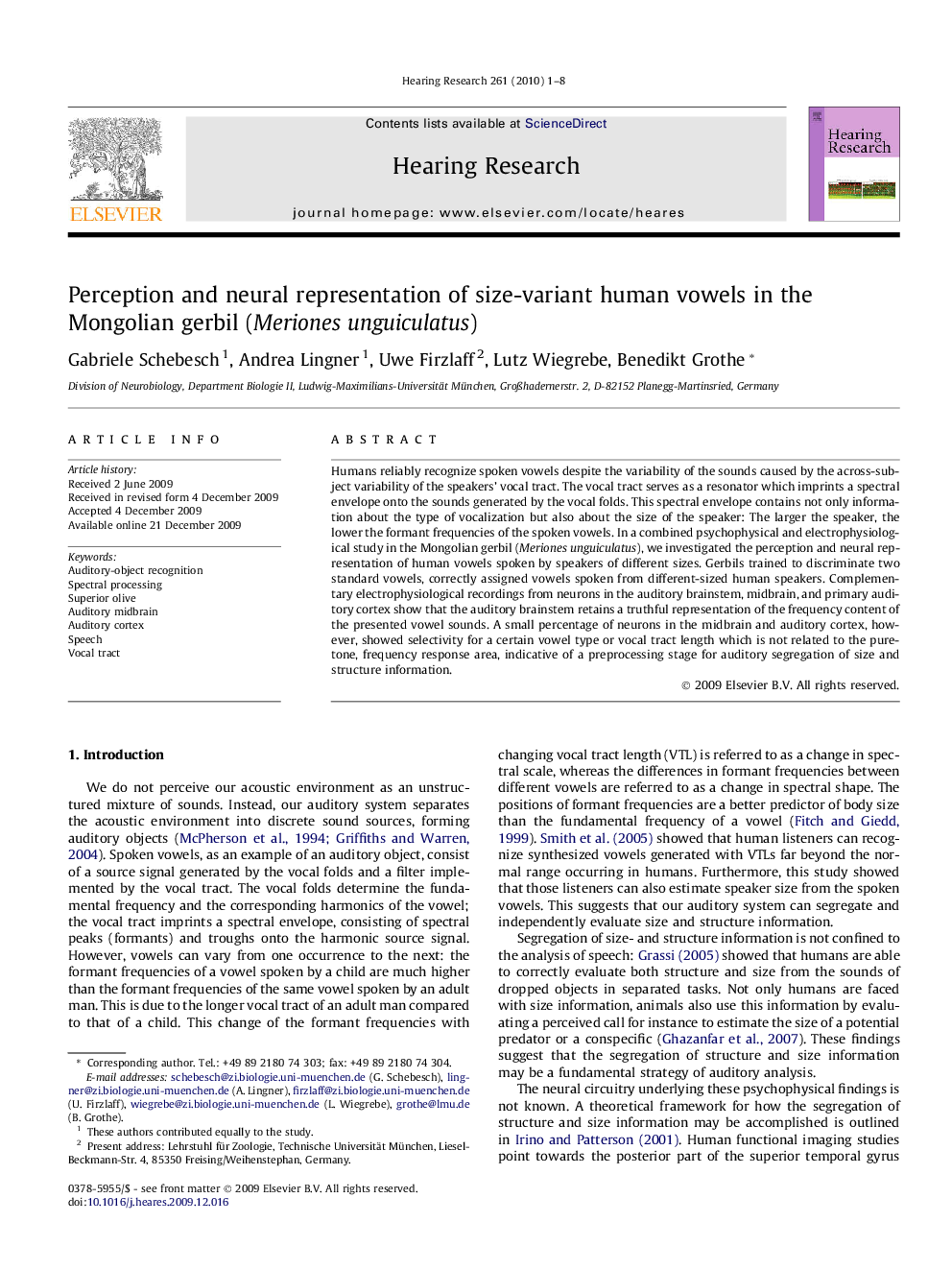| Article ID | Journal | Published Year | Pages | File Type |
|---|---|---|---|---|
| 4355661 | Hearing Research | 2010 | 8 Pages |
Humans reliably recognize spoken vowels despite the variability of the sounds caused by the across-subject variability of the speakers’ vocal tract. The vocal tract serves as a resonator which imprints a spectral envelope onto the sounds generated by the vocal folds. This spectral envelope contains not only information about the type of vocalization but also about the size of the speaker: The larger the speaker, the lower the formant frequencies of the spoken vowels. In a combined psychophysical and electrophysiological study in the Mongolian gerbil (Meriones unguiculatus), we investigated the perception and neural representation of human vowels spoken by speakers of different sizes. Gerbils trained to discriminate two standard vowels, correctly assigned vowels spoken from different-sized human speakers. Complementary electrophysiological recordings from neurons in the auditory brainstem, midbrain, and primary auditory cortex show that the auditory brainstem retains a truthful representation of the frequency content of the presented vowel sounds. A small percentage of neurons in the midbrain and auditory cortex, however, showed selectivity for a certain vowel type or vocal tract length which is not related to the pure-tone, frequency response area, indicative of a preprocessing stage for auditory segregation of size and structure information.
